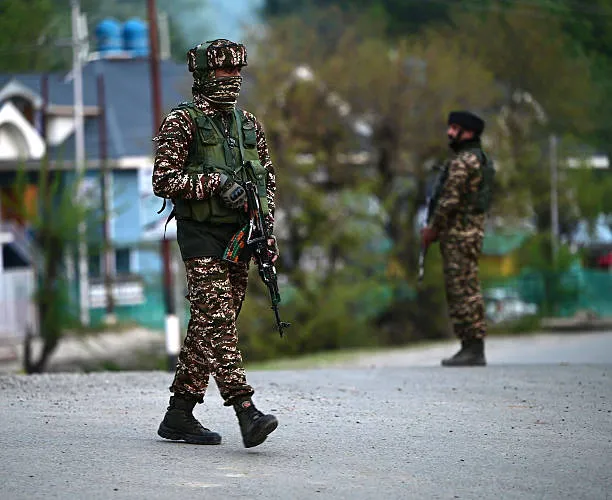India’s May 7 Mock Drill: A Wake-Up Call on Civil Defense Preparedness Amid Mounting Security Concerns
When India’s Ministry of Home Affairs (MHA) issues a directive for civil defense in India, mock drills across states and Union Territories on May 7, 2025, are no routine bureaucratic exercise. It’s a grim warning wrapped in preparedness. The directive, orchestrated by the Directorate General of Civil Defense (DGCD), aims to awaken both citizens and state agencies to the possibility of emergencies that require wartime-level response strategies.

With air raid sirens, public evacuations, and training sessions on the cards, the upcoming drill is a reminder that national security is no longer the responsibility of soldiers alone — it demands active civilian participation.
🔍 Understanding the Context: Why This Drill, and Why Now?
The May 7 drill comes at a time when India faces increased strategic vulnerabilities. Over the past year, several critical developments have unfolded:
- Rising border tensions, particularly along the Line of Actual Control (LAC) with China.
- Persistent terror threats in urban and rural areas.
- Escalating cybersecurity attacks on Indian infrastructure.
- A volatile global environment, including conflicts in Ukraine, Israel, and the Indo-Pacific.
Such a comprehensive drill is not about “if” a crisis will happen, but when and how the nation responds.
🛡️ What Will Happen on May 7: Drill Activities Across India
The May 7 mock drill involves several high-level activities meant to simulate an actual national emergency:
- Activation of air raid sirens in districts and urban zones.
- Evacuation drills in sensitive areas like railway stations, schools, hospitals, and government buildings.
- Emergency medical simulations including surge handling in hospitals.
- Training civilians on what to do during an airstrike, fire, or missile attack.
- Inter-agency coordination involving civil defense in India, disaster response teams, police, fire services, and local municipalities.
States have been told to document their performance and submit reports, making this a nationwide accountability exercise.
⚠️ The Bigger Picture: What This Really Signals
Although the MHA has not cited any specific imminent threat, the scale and scope of this drill suggest that India is bracing for non-conventional warfare scenarios, including:
1. Air and Missile Strikes
This includes potential attacks on civilian infrastructure, especially in border states.
2. Urban Terrorism
Revisiting 26/11-type threats and ensuring swift evacuation and rescue procedures.
3. Cyber Warfare
Disabling of communication systems, traffic signals, power grids, and hospital databases.
4. Internal Conflict and Panic
How authorities manage crowd control, prevent stampedes, and tackle fake news during chaos.
🧱 India’s Civil Defense Framework: Forgotten but Vital
Most Indians don’t realize that civil defense in India is enshrined in law — the Civil Defense Act, 1968. It provides for:
- Registered Civil Defense Volunteers.
- Emergency stockpiles and shelters.
- Coordination between local and national agencies.
However, years of peace have pushed civil defense in India into the background. There are few working sirens, limited training, and poor awareness even among educated citizens.
This mock drill is a push to revive and modernize civil defense strategies.
🧩 Key Gaps in India’s Emergency Preparedness
Despite the importance of the drill, several glaring issues plague India’s emergency response infrastructure:
- Awareness Vacuum: The average Indian doesn’t know what an air raid siren sounds like or what it means.
- No Public Shelters: Unlike Israel or Japan, most Indian cities lack accessible underground bunkers or safe zones.
- Fragmented Coordination: Many state agencies are ill-equipped or not trained to act in sync during high-pressure scenarios.
- Lack of Community Drills: Schools, malls, residential complexes rarely conduct rehearsals, leading to panic in real emergencies.
🌍 Global Models India Can Learn From
India need not reinvent the wheel. There are strong international examples:
| Country | Civil Defense Strategy |
|---|---|
| Israel | Mandatory shelters in every residential unit. Regular missile drills. |
| Japan | Earthquake and tsunami drills in schools and public institutions every month. |
| South Korea | National siren drills, bunker access, and citizen app alerts. |
These nations treat civil defense in India as core to national identity. India, facing natural and man-made threats, needs a similar cultural shift.
🙋 Civilian Role: Not Just a Spectator Anymore
This drill marks a paradigm shift. No longer can Indian civilians assume the military or police will handle everything. Each citizen must be a participant, not a bystander.
Here’s what you can do now:
- Learn siren signals and emergency codes.
- Identify nearby safe zones and hospitals.
- Maintain an emergency kit: flashlight, water, first aid, essential medicines, ID cards.
- Memorize emergency contacts and teach your family.
- Engage in your local disaster management group, if one exists.
🧠 Psychological Preparation: The Missing Piece
Disasters and attacks aren’t just physical events. They cause mass fear, confusion, and misinformation. Civil defense in India must also include:
- Mental health readiness (handling panic, shock, grief).
- Digital hygiene (not sharing unverified news).
- Community training sessions (so people help one another instead of fleeing blindly).
📢 The Message Behind the Sirens: Don’t Ignore This Drill
This is not fearmongering. It’s realism.
May 7 is a simulation, but it is also a stress test of India’s emergency backbone. If sirens fail, if people don’t respond, if agencies struggle to coordinate, then it’s not just a failed drill. It’s a preview of a future tragedy.
We must not wait for a real emergency to teach us the value of preparedness.
✍️ Final Thoughts: A Nation in Preparation, or a Nation in Denial?
The Home Ministry’s mock drill directive is a critical move in the right direction. But whether it remains a one-time spectacle or becomes the foundation of a long-term civil defense in Indian culture depends on you, me, and every institution in this country.
India is entering an era where threats are unpredictable, swift, and multi-dimensional.
The question is not “Why now?”
The question is — “Why weren’t we doing this already?”
So on May 7, when the sirens wail, don’t laugh, don’t ignore, don’t scroll past it.
Pay attention. Participate. Prepare.
Because in today’s world, preparedness is the new patriotism.
Follow BuzzTimes.in for more updates










Can you be more specific about the content of your article? After reading it, I still have some doubts. Hope you can help me.